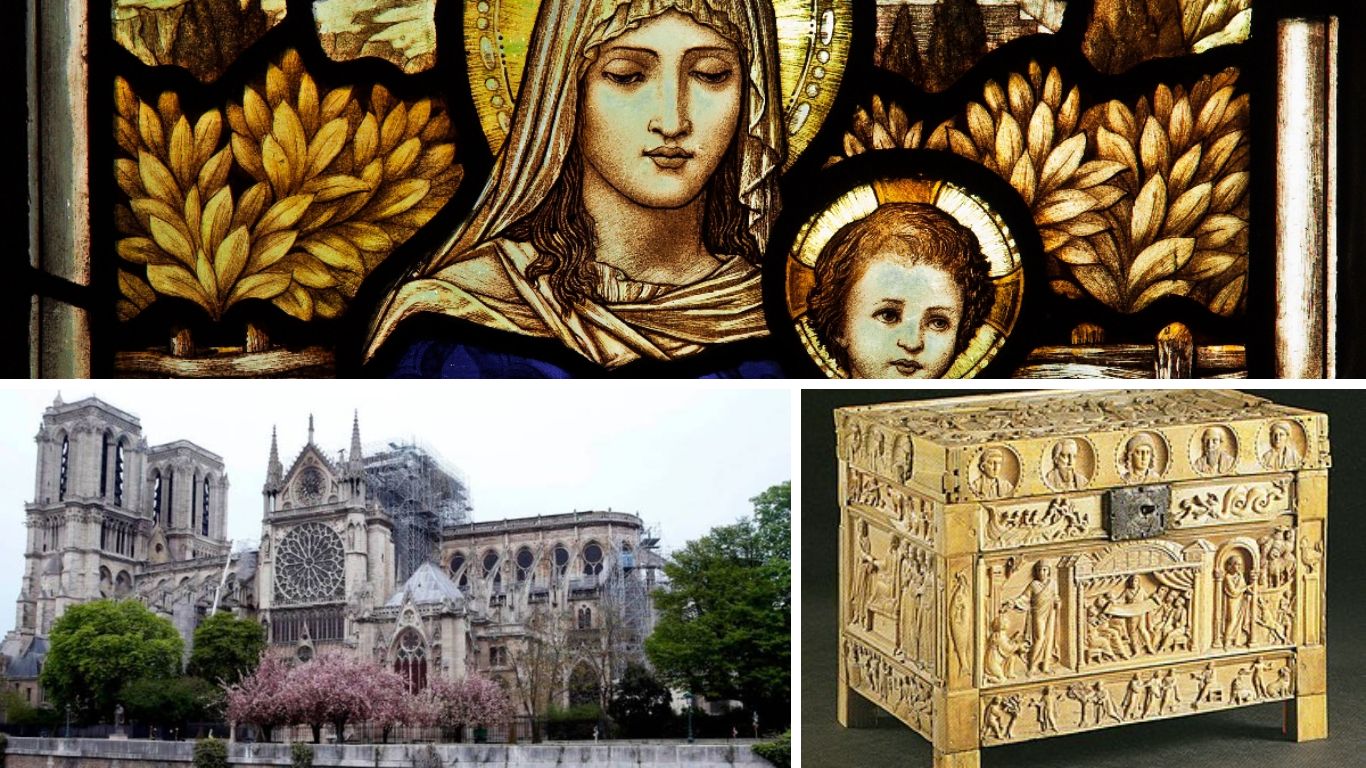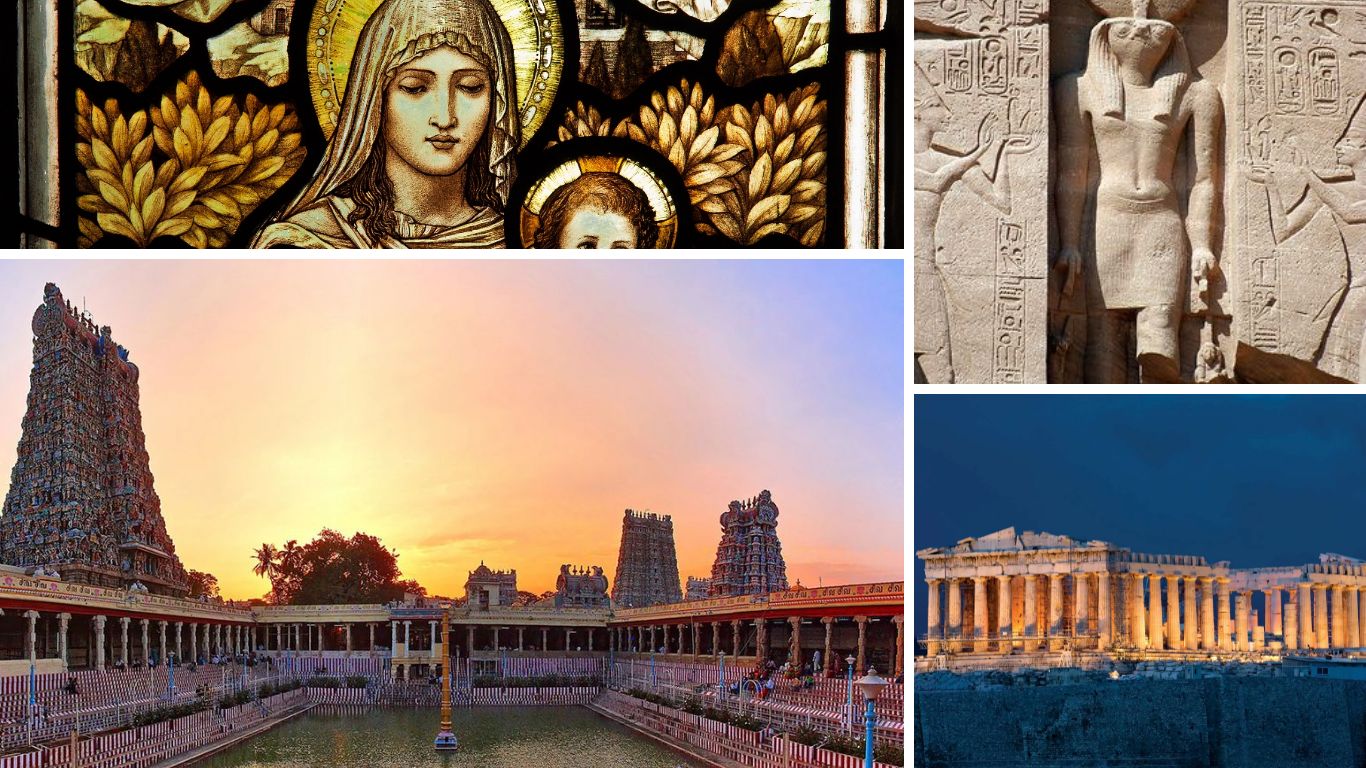Mythology has played a significant role in shaping the art and architecture of many cultures throughout history. From ancient Greece and Egypt to more modern times, myths and religious beliefs have served as a source of inspiration for artists and architects, influencing the creation of everything from sculptures and paintings to temples and other religious buildings. Different mythologies have distinct and unique influences on art and architecture, each adding to the cultural and aesthetic traditions of societies and civilizations. The stories, gods, and heroes of mythology have been immortalized in the form of art and architecture, and continue to captivate and inspire people to this day. In this article we will learn about the influence of mythology on art and architecture.
Influence of Mythology on Art and Architecture
Greek Mythology

In ancient Greece, the relationship between mythology and art and architecture was a close one. Greek mythology, which centered around the gods and heroes of Greek religion, provided a rich source of inspiration for the creation of art and the design of buildings.
One of the most notable examples of the influence of Greek mythology on architecture is the Parthenon in Athens. This temple, which was dedicated to the goddess Athena, the city’s patron goddess, featured a series of sculptures depicting gods and heroes from Greek mythology. The Parthenon frieze, for example, depicted a procession of gods and heroes, while the pediments (the triangular spaces above the entrance) featured sculptures of scenes from the myths of Athena and Poseidon. The temple also featured a statue of Athena Parthenos, a massive statue of the goddess made of gold and ivory.
Similarly, other temples such as the Temple of Olympian Zeus, and the Temple of Athena Nike, featured sculptures of gods and goddesses. The Temple of Olympian Zeus was dedicated to the king of the gods, Zeus and featured massive columns, while the Temple of Athena Nike was dedicated to the goddess of victory and featured sculptures of winged Nike figures.
Greek sculpture was also heavily influenced by mythology. Many of the most famous Greek sculptures such as the Venus de Milo, the Apollo Belvedere, and the Winged Victory of Samothrace depict gods, goddesses, and heroes from Greek mythology. These sculptures were displayed in public spaces such as temples, public squares, and other civic buildings.
The Greek pottery also featured myths and gods, as well as scenes from daily life. These were used for both practical and decorative purposes, and were often used as grave offerings. Many of these pottery pieces have been discovered by archaeologists and provide a glimpse into the everyday life and beliefs of ancient Greek society.
In the ancient Greek theater also drew inspiration from mythology, with plays often depicting the stories and deeds of gods and heroes. These plays were performed in open-air theaters, such as the Theater of Dionysus in Athens, and were an important part of Greek culture and society.
Egyptian Mythology

In ancient Egypt, religion and mythology were deeply intertwined with the art and architecture of the civilization. The gods and goddesses of ancient Egyptian religion, such as Ra, Horus, and Anubis, played a major role in the creation of art and the design of buildings.
One of the most notable examples of the influence of Egyptian mythology on architecture is the Great Pyramid of Giza. This iconic structure, which was built as a tomb for the Pharaoh Khufu, featured a series of intricate hieroglyphs depicting gods and goddesses from Egyptian mythology. The pyramid also featured a series of statues and sculptures, such as the Sphinx, which depicted the head of a human and the body of a lion, a symbol of the god Horus.
Similarly, other Egyptian temples and religious buildings were also decorated with hieroglyphs and paintings depicting gods and goddesses from Egyptian mythology. Many of these temples were built to honor specific gods and goddesses, such as the Temple of Ra in Heliopolis, which was dedicated to the god of the sun, or the Temple of Horus at Edfu, which was dedicated to the god of the sky. These temples were also adorned with statues and sculptures of gods and goddesses, as well as reliefs depicting scenes from Egyptian myths and legends.
Egyptian art also featured gods and goddesses from mythology, as well as scenes from daily life. These works of art, such as statues, reliefs, and paintings, were often displayed in temples and other religious buildings, and were used for both practical and decorative purposes. These works of art have been discovered by archaeologists and provide a glimpse into the everyday life and beliefs of ancient Egyptian society.
Mayan Mythology

In ancient Mesoamerica, the Maya and Aztec civilizations had their own unique myths and gods. Their gods were often depicted in sculptures and paintings, as well as in the decoration of temples and other religious buildings. The Mayan pyramids, such as the Temple of Kukulkan at Chichen Itza, are examples of the significant influence of Mayan mythology on architecture.
Mayans believed in a complex pantheon of gods and goddesses, each with their own specific roles and responsibilities. These gods were often depicted in sculptures and paintings, as well as in the decoration of temples and other religious buildings. The gods were also invoked in religious ceremonies and sacrifices, which were an important part of Mayan religious practice.
The Mayan pyramids were also heavily influenced by mythology. The Temple of Kukulkan at Chichen Itza, for example, was dedicated to the god of the same name and featured a series of intricate carvings depicting gods and goddesses from Mayan mythology. The pyramid also featured a series of statues and sculptures, such as the Chac Mool, which depicted a reclining figure holding a bowl, a symbol of the god of rain.
Mayan art also featured gods and goddesses from mythology, as well as scenes from daily life. These works of art, such as statues, reliefs, and paintings, were often displayed in temples and other religious buildings, and were used for both practical and decorative purposes. Many of these works of art have been discovered by archaeologists and provide a glimpse into the everyday life and beliefs of ancient Mayan society.
Hindu Mythology

In Hindu mythology, there are many gods and goddesses, each with their own stories, attributes, and roles in the universe. These gods and goddesses are an important part of Hindu religious practice, and are often invoked in prayers, rituals, and ceremonies. The temples and other religious buildings in India are adorned with intricate carvings and sculptures of these gods and goddesses, reflecting the central role they play in Hindu religion and culture.
The South Indian temples are particularly notable examples of the significant influence of Hindu mythology on architecture. Temples such as the Meenakshi Temple in Madurai and the Kailasa Temple in Ellora are famous for their intricate and detailed carvings and sculptures of gods and goddesses from Hindu mythology. The Meenakshi Temple, for example, is dedicated to the goddess Meenakshi and features a series of sculptures depicting the goddess and other Hindu gods and goddesses. The Kailasa Temple, on the other hand, is an architectural masterpiece that was built to honor Lord Shiva and features a massive sculpture of the god in the center of the temple.
Chinese Mythology

In Chinese mythology, the gods and goddesses are often associated with the natural elements, such as the sky, the earth, and the sea. These gods and goddesses were considered to be powerful beings who controlled the elements and were responsible for the well-being of the people. Chinese art and architecture often feature these gods and goddesses, as well as dragons, which are considered to be powerful and auspicious creatures in Chinese mythology.
The Forbidden City in Beijing is a notable example of the significant influence of Chinese mythology on architecture. This vast palace complex, which served as the residence of the Chinese emperor for over 500 years, is adorned with intricate carvings and sculptures of gods and goddesses from Chinese mythology, as well as dragons. The palace also features many other symbols and motifs from Chinese mythology such as the phoenix, a mythical bird that represents good luck and prosperity.
In Chinese art, the gods and goddesses of mythology also play an important role, as well as dragons which are considered to be powerful and auspicious creatures. These gods and goddesses were often depicted in Chinese paintings, sculptures, and ceramics. Many of these works of art have been discovered by archaeologists and provide a glimpse into the everyday life and beliefs of ancient Chinese society.
Christian Mythology

In Christianity, the Bible and Christian mythology have played a significant role in shaping the art and architecture of churches, cathedrals, and other religious buildings. The stories, characters and events from the Bible and Christian mythology have provided inspiration for many works of art throughout history.
The influence of the Bible and Christian mythology is seen in the design and decoration of churches, cathedrals, and other religious buildings. Many of these buildings feature intricate carvings, sculptures, and frescoes that depict scenes from the Bible and Christian mythology. For example, the Notre-Dame de Paris is a great example of the influence of Christian mythology on architecture. The cathedral features sculptures of biblical figures such as the Virgin Mary and Jesus Christ, as well as angels, saints, and other religious figures.
The Christian art, the Bible and Christian mythology are also an important source of inspiration. Many works of Christian art depict scenes from the Bible and Christian mythology, such as the life of Jesus Christ, the miracles performed by him, and the lives of saints. These works of art, such as paintings, sculptures, and frescoes, are often displayed in churches, cathedrals, and other religious buildings. They serve to educate and inspire the faithful, and to remind them of the central role of the Bible and Christian mythology in their faith.
Conclusion
Mythology has played a significant role in shaping the art and architecture of many cultures throughout history. From ancient Greece and Egypt to more modern times, myths and religious beliefs have served as a source of inspiration for artists and architects, influencing the creation of everything from sculptures and paintings to temples and other religious buildings. Different mythologies have distinct and unique influences on art and architecture, each adding to the cultural and aesthetic traditions of societies and civilizations. The stories, gods, and heroes of mythology have been immortalized in the form of art and architecture and continue to captivate and inspire people to this day.
The influence of mythology can be seen in the grandeur and awe-inspiring monuments, the beauty and human-like features of the sculptures, and the intricate carvings and frescoes that adorn temples and other religious buildings. Overall, mythology has played a crucial role in shaping the art and architecture of cultures throughout history and continues to be an important source of inspiration and cultural heritage.
Also Read: Top 10 Movies based on Egyptian Mythology




